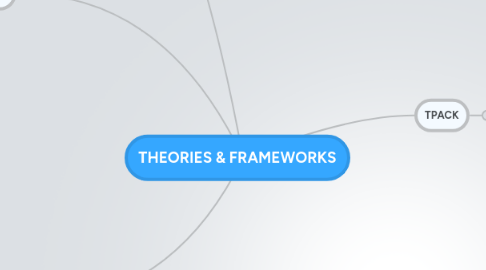
1. SAMR
1.1. Dr. Ruben Puentedura
1.1.1. Creator of the model
1.1.2. Used research regarding how teachers were using technology in the classroom.
1.2. The concept here is that a teacher can take any piece of technology and use it.
1.2.1. It is more important thought to look at what they do with it.
1.2.1.1. Is it an enhancement or transformation?
1.3. Four levels:
1.3.1. (1) Substitution
1.3.1.1. Occurs when computer technology is used to perform the same task that was performed before without the use of computers.
1.3.2. (2) Augmentation
1.3.2.1. Technology using computers offers an effective tool to perform common tasks.
1.3.3. (3) Modification
1.3.3.1. Through the use of computer technology, common classroom tasks are being accomplished.
1.3.4. (4) Redefinition
1.3.4.1. New tasks that were previously not possible are not made possible through computer technology.
1.4. Goal:
1.4.1. Bring students from technology enhanced to technology transformation.
2. 21st CENTURY
2.1. Three levels of knowledge:
2.1.1. (1)Foundational Knowledge
2.1.1.1. Content
2.1.1.2. Information/ Digital literacy
2.1.1.3. Cross-disciplinary knowledge
2.1.2. (2) Meta Knowledge
2.1.2.1. Problem solving/ Critical thinking
2.1.2.2. Communication/ Collaboration
2.1.2.3. Creativity
2.1.3. (3) Humanistic Knowledge
2.1.3.1. Life/ job skills
2.1.3.2. Cultural competence
2.1.3.3. Ethical and Emotional awareness
3. PHILOSOPY OF TEACHNOLOGY
3.1. Derived from the philosophy of teaching about current teaching practices.
3.2. Includes ones belief about how technology can/should be used in teaching practices.
3.3. Creating a teacher professional growth plan
3.3.1. If you are employed in Alberta you must develop and implement a plan for professional growth.
3.3.2. Outlines the professional development activities that teachers intend to complete in that year.
4. TPACK
4.1. To successfully integrate technology in the classroom, a teacher needs to focus on three domains.
4.1.1. Technological Knowledge (TK)
4.1.1.1. Knowledge regarding technological resources and tools.
4.1.2. Pedagogical Knowledge (PK)
4.1.2.1. Knowledge about the processes of teaching and learning.
4.1.3. Content Knowledge (CK)
4.1.3.1. Knowledge regarding subject matter that you as a teacher specialize in.
4.2. There is an overlap between TK, PK, and CK.
4.2.1. Pedagogical Content Knowledge (PCK)
4.2.1.1. Is the interplay between how to teach and a specific subject area.
4.2.2. Technological Content Knowledge (TCK)
4.2.2.1. Focuses on the knowledge of how technology can be used to teach content in new ways.
4.2.3. Technological Pedagogical Knowledge (TPK)
4.2.3.1. The strengths and limitations of technology as an enabler of different teaching approaches.
4.2.4. Technological Pedagogical Content Knowledge (TPCK)
4.2.4.1. Understanding the complex interplay between TK, PK, and CK.
4.3. Drawbacks
4.3.1. The requirements are sometimes incomplete and contradictory.
4.3.2. Changing requirements.
4.3.3. Finding consistent solutions.
